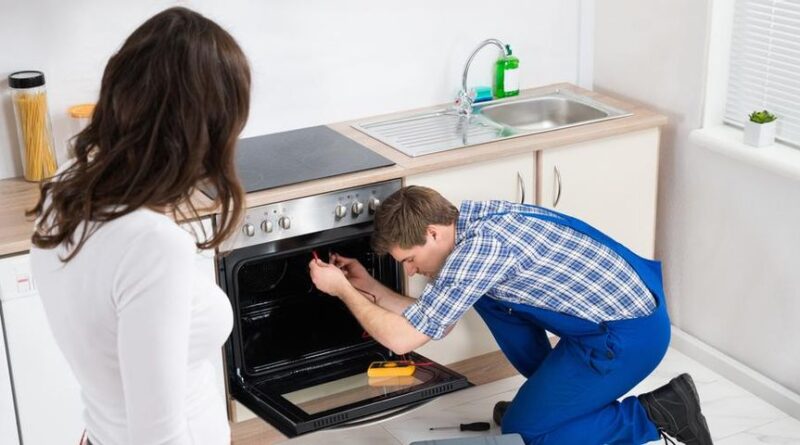How to Replace an Oven Temperature Limiter
Replacing an oven temperature limiter may seem like a daunting task, but with the right guidance, it’s entirely manageable—even for someone with limited experience. This guide will walk you through the process step-by-step, ensuring you can tackle the job confidently. Whether you’re a seasoned repair technician or a DIY enthusiast, this article will provide you with the essential knowledge to get the job done right. Moreover, we’ll touch upon the importance of commercial ovens repair in maintaining the functionality and safety of your equipment.
Understanding the Role of the Oven Temperature Limiter
Before diving into the replacement process, it’s crucial to understand what an oven temperature limiter does. The temperature limiter is a safety device that prevents the oven from overheating. When the oven’s temperature exceeds safe levels, the limiter interrupts the electrical circuit to stop the oven from continuing to heat. This feature is especially vital in commercial ovens where safety and reliability are non-negotiable due to the high stakes involved in food service operations.
Signs That Your Oven Temperature Limiter Needs Replacement
How do you know if your oven temperature limiter is faulty? Here are some common signs:
- The Oven Overheats: If your oven is getting hotter than the set temperature, this could indicate that the temperature limiter is not working correctly.
- Frequent Tripping: If the oven keeps shutting off unexpectedly, the limiter might be tripping more frequently than it should.
- The Oven Won’t Heat: In some cases, a faulty temperature limiter may prevent the oven from heating at all.
Recognizing these signs early can prevent further damage to your oven and ensure that your ovens repair efforts are timely and effective.
Tools and Materials Needed
To replace the oven temperature limiter, you will need:
- Replacement temperature limiter
- Screwdrivers (flathead and Phillips)
- Needle-nose pliers
- Multimeter (optional but recommended for testing)
- Insulated gloves
- Safety goggles
- Owner’s manual for your oven model
Having the right tools on hand will make the process smoother and help you avoid unnecessary delays.
Safety Precautions Before Starting
Working with electrical appliances requires caution. Before you begin the replacement process, ensure that you’ve taken the following safety steps:
- Disconnect the Power: Unplug the oven from the wall outlet or shut off the power from the circuit breaker. This step is crucial to avoid electrical shock.
- Wear Safety Gear: Put on your safety goggles and insulated gloves to protect yourself from potential hazards.
- Allow the Oven to Cool: Make sure the oven is completely cool before starting any repair work to avoid burns or other injuries.
By taking these precautions, you minimize the risk of accidents and ensure a safe working environment.
Step-by-Step Guide to Replacing the Oven Temperature Limiter
1. Access the Oven’s Back Panel
The first step is to access the area where the temperature limiter is located, usually at the back of the oven.
- Move the Oven: Carefully pull the oven away from the wall to access the back panel. If your oven is heavy or built into a cabinet, you may need assistance.
- Remove the Screws: Use a screwdriver to remove the screws securing the back panel. Keep these screws in a safe place, as you’ll need them later.
- Remove the Back Panel: Carefully take off the back panel to expose the internal components of the oven.
2. Locate the Temperature Limiter
The temperature limiter is typically found near the heating elements or attached to the oven’s rear wall.
- Consult the Owner’s Manual: If you’re unsure where the limiter is located, refer to your oven’s owner’s manual for guidance.
- Identify the Limiter: The temperature limiter will usually be a small, rectangular or circular device with two wires attached to it.
3. Test the Old Limiter (Optional)
Before replacing the limiter, you might want to test it to confirm that it’s faulty.
- Use a Multimeter: Set your multimeter to the continuity setting. Place the probes on the terminals of the limiter.
- Check for Continuity: If the multimeter does not beep or show continuity, the limiter is defective and needs replacement.
4. Disconnect the Wires
Once you’ve identified the limiter and confirmed it’s faulty, it’s time to remove it.
- Mark the Wires: Before disconnecting the wires, take note of their positions. You can use tape or take a photo to remember where each wire connects.
- Remove the Wires: Use needle-nose pliers to carefully disconnect the wires from the temperature limiter.
5. Remove the Old Limiter
- Unscrew the Limiter: The temperature limiter is usually held in place by one or two screws. Use your screwdriver to remove these screws.
- Take Out the Limiter: Gently pull the limiter out of its position.
6. Install the New Temperature Limiter
With the old limiter removed, you can now install the new one.
- Position the New Limiter: Place the new temperature limiter where the old one was installed.
- Secure It with Screws: Use the screws you removed earlier to secure the new limiter in place.
- Reconnect the Wires: Attach the wires to the new limiter, ensuring they are connected to the correct terminals.
7. Reassemble the Oven
Once the new limiter is installed, it’s time to put everything back together.
- Replace the Back Panel: Position the back panel over the oven and secure it with the screws.
- Move the Oven Back: Carefully slide the oven back into its original position against the wall.
8. Test the Oven
After reassembling the oven, it’s essential to test it to ensure everything is working correctly.
- Restore Power: Plug the oven back in or turn on the circuit breaker.
- Turn on the Oven: Set the oven to a low temperature and observe whether it heats up properly without overheating.
- Monitor for Issues: Pay attention to whether the oven shuts off unexpectedly or exhibits any signs of malfunction.
If the oven heats evenly and doesn’t overheat, you’ve successfully replaced the temperature limiter.
Common Challenges and Troubleshooting Tips
Replacing an oven temperature limiter is generally straightforward, but you may encounter a few challenges along the way. Here are some tips to help you troubleshoot common issues:
- Oven Still Overheating: If the oven continues to overheat after replacing the limiter, the problem might be with the thermostat or heating elements.
- Oven Won’t Heat: If the oven doesn’t heat at all after the replacement, double-check the wire connections to ensure they are secure.
- Difficulty Removing the Back Panel: If the screws are stripped or stuck, use a screw extractor or apply a penetrating oil to loosen them.
If these troubleshooting tips don’t resolve the issue, it might be time to consult a professional, particularly if you’re dealing with commercial ovens repair. In a commercial setting, it’s often more cost-effective to bring in an expert who can ensure that the repair is done quickly and correctly.
The Importance of Professional Maintenance for Commercial Ovens
For those managing commercial kitchens, regular maintenance and timely repairs of ovens are critical. A faulty oven can lead to uneven cooking, potential safety hazards, and even costly downtime. While replacing an oven temperature limiter is something you can do on your own, regular maintenance by a professional is highly recommended.
Professional technicians have the expertise to not only replace parts like temperature limiters but also to conduct thorough inspections that can identify potential issues before they escalate. This proactive approach can save you money and ensure that your equipment operates at peak efficiency.
Conclusion
Replacing an oven temperature limiter is a vital task that can save your oven from severe damage and maintain safety standards in your kitchen. By following the steps outlined in this guide, you can confidently replace the temperature limiter in your oven, whether it’s for home use or part of a commercial ovens repair. Remember, while DIY repairs are feasible, regular professional maintenance is key to keeping your oven running smoothly and safely.




